Highlights of the 2007 Midland CAF Airshow
|
The Commemorative Air Force airshow held near the Texas city of Midland is
one of the best three warbird shows in the United States.
Here's the plane that started it all, the P-51 Mustang "Red Nose" bought
in 1957, which became the basis of the entire collection, known back in
those unpolitically correct days as the Confederate Air Force.
|
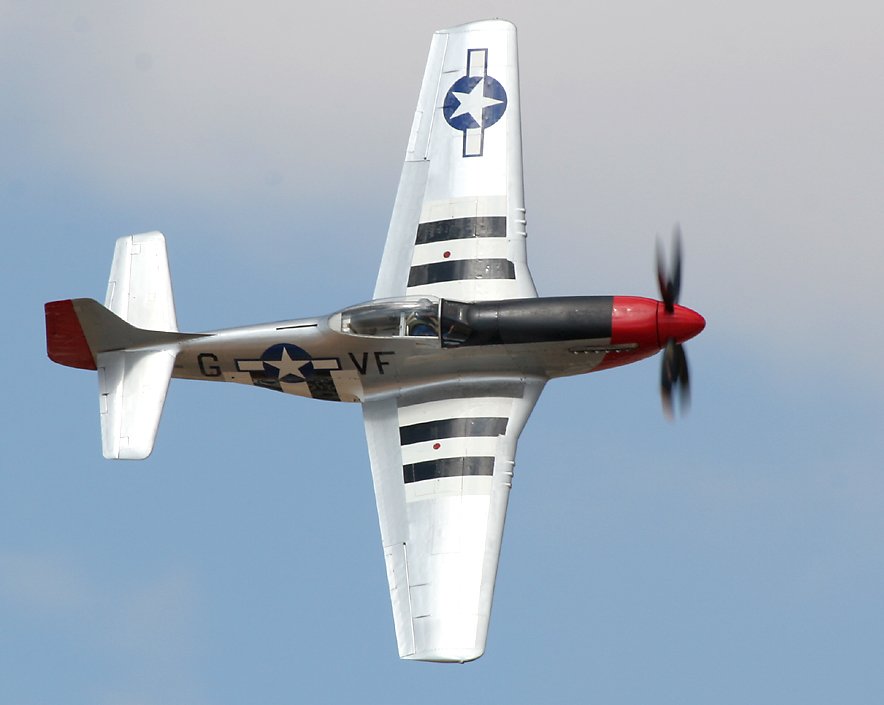 |

|
Here's another beautifully restored world war two fighter, the P-47 Thunderbolt
"Tarheel Hal". Because of its size and power, pilots referred
to the Thunderbolt as the "Jug", short for "juggernaut". It
was as adept at air-to-air combat as ground attack, and could swallow a
great deal of damage and still return to base.
|
 |

|
Midland is the only place where you can see a large formation of classic bombers
like this in the air at the same time, all of them belonging to different
Commemorative Air Force wings around the country. Unfortunately
the organization's B-29 Superfortress "Fifi" was unable to take part last
year or this year, because it was still undergoing a time-consuming and
very expensive overhaul.
|
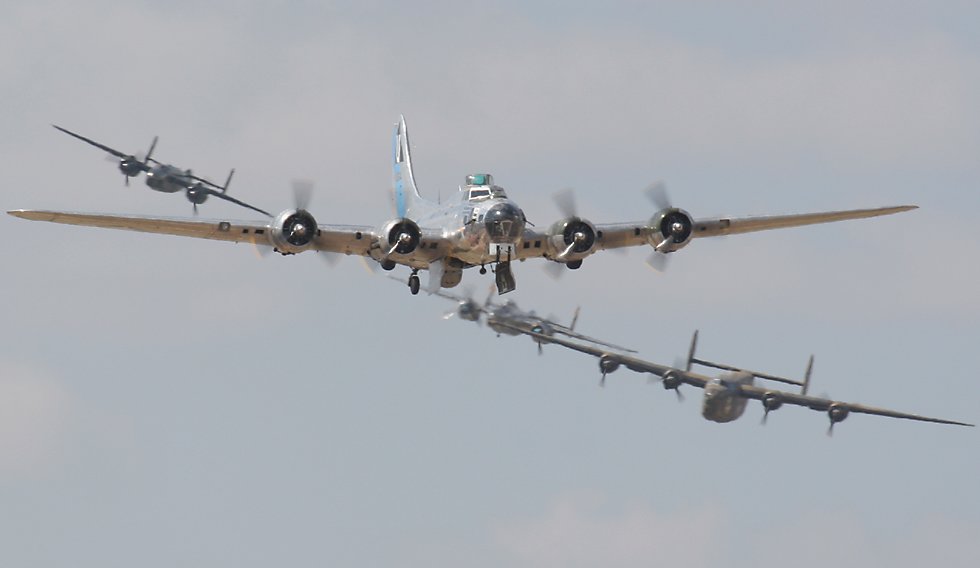 |

|
Midland has a wide variety of aircraft, as well as an airfield which allows the
pilots to throw their planes around at very photogenic angles.
These factors draw aviation enthusiasts from around America and even from
as far afield as Europe. Here's the B-25 Mitchell bomber "Miss
Mitchell", which flew with another B-25 modelled after one of the Doolittle
Raiders which attacked Tokyo early in the war by flying off the aircraft
carrier USS Hornet.
|
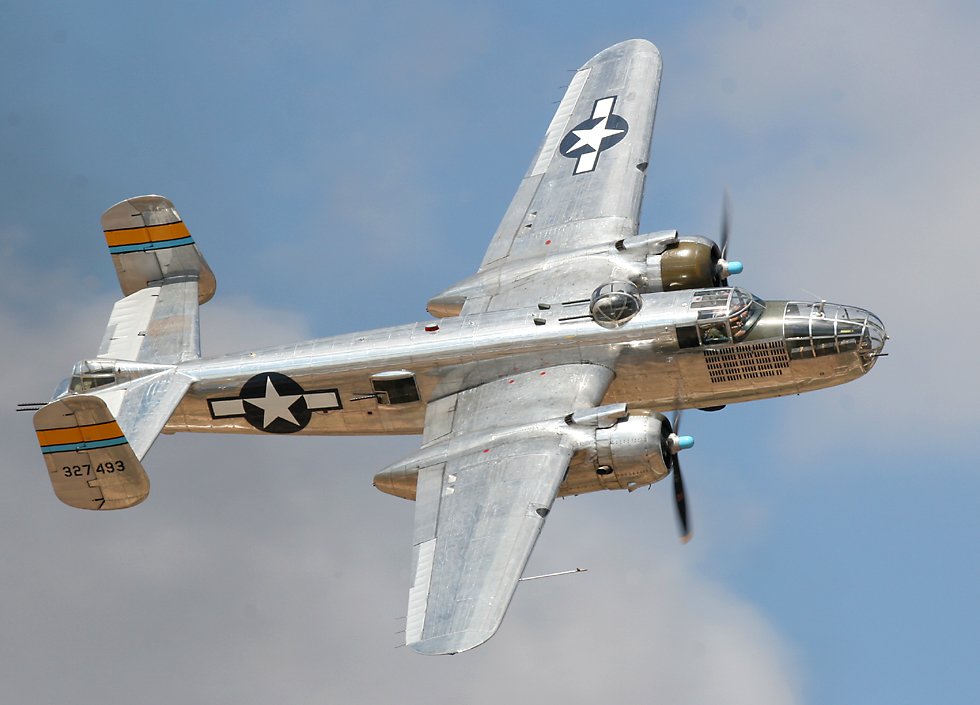 |

|
This is the classic American heavy bomber of world war two, the B-17G Flying
Fortress "Sentimental Journey". The B-17G is a late war
model, bristling with ten .50 caliber machine guns.
|
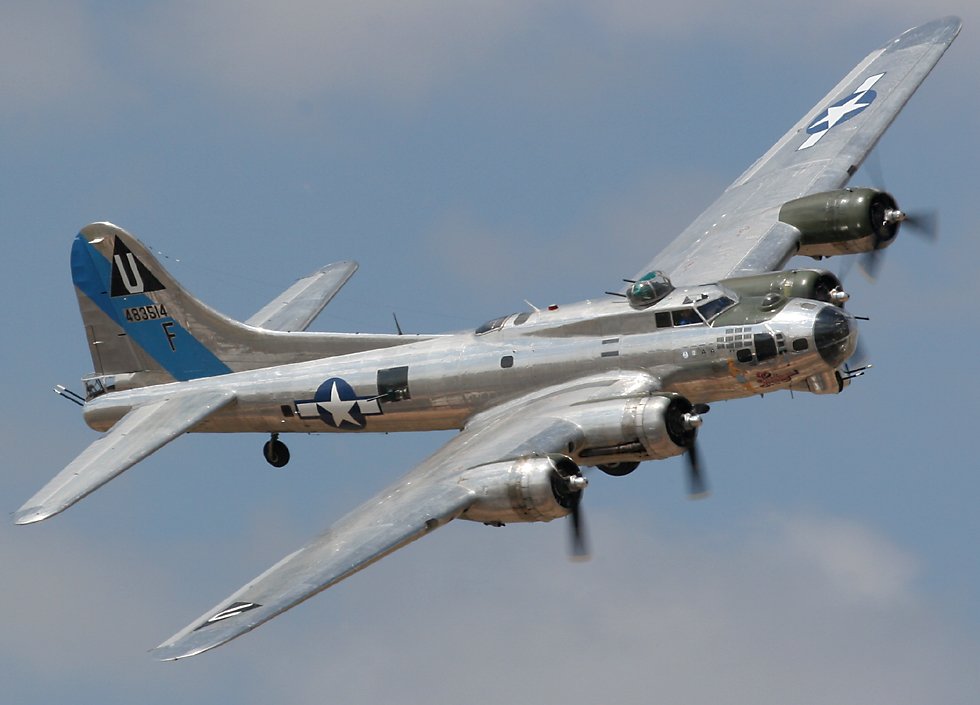 |

|
Here's one of only two flyable B-24 Liberator bombers left in the world.
This particular aircraft flew for years in the guise of "Diamond Lil",
the LB-30 cargo version of the Liberator, but it was recently reconfigured
as an early model B-24A, which lacks the top turret and ball turret of
later models.
|
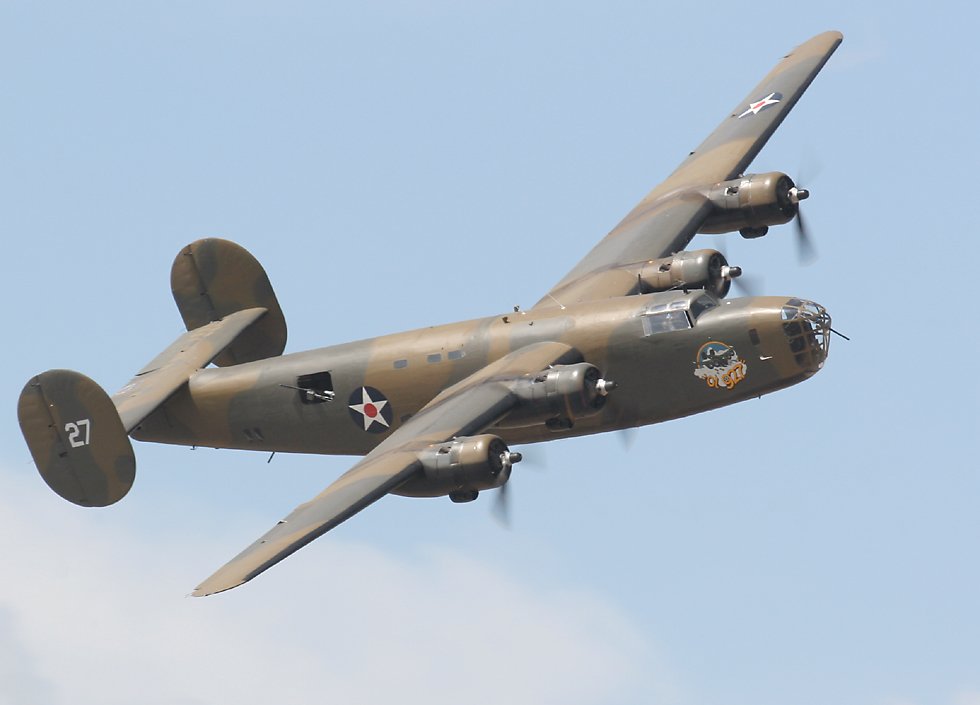 |

|
Although more Liberators were built than Flying Fortresses or any other American
military aircraft before or since, the Liberator never captured the public
imagination in the same way as the Flying Fortress. The B-24
was developed well after the B-17, and incorporated a number of innovative
features such as a very narrow Davis wing and tricycle landing gear.
The wing gave it more speed, longer range and greater carrying capacity
than the B-17, however the B-24 was less able to withstand battle damage
than its predecessor, and it was also harder to escape from, which made
it less popular with many crews.
|
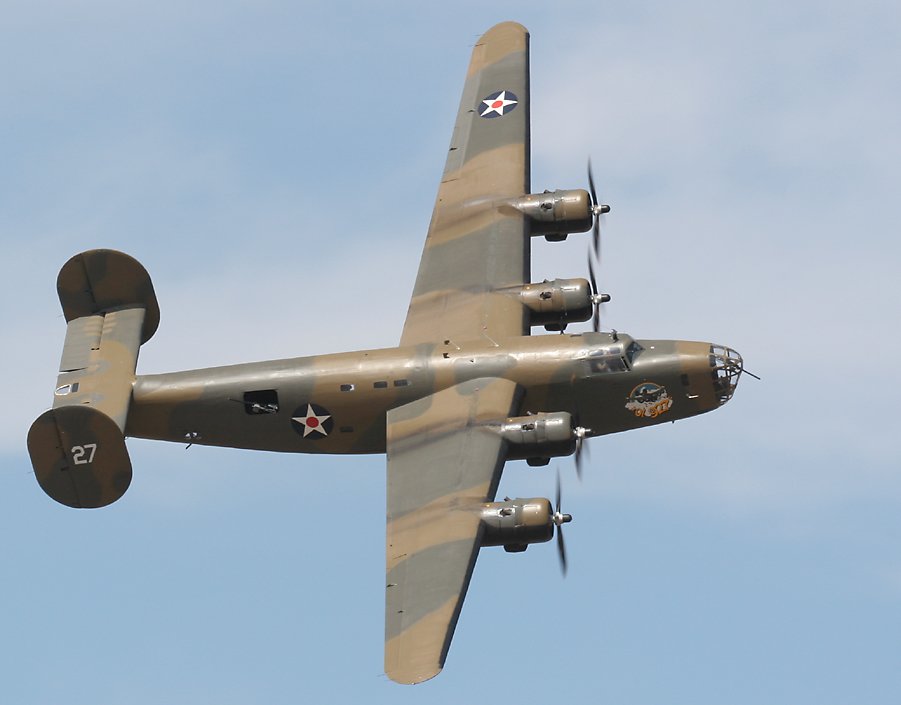
|

|
One of the great things about the Midland show is that you'll see aircraft
types that you won't see anywhere else, such as this C-46 Commando.
The Commando is similar to the Liberator in that it was a more modern and
in many ways more capable aircraft which was overshadowed by its predecessor,
in this case the C-47 Dakota.
|
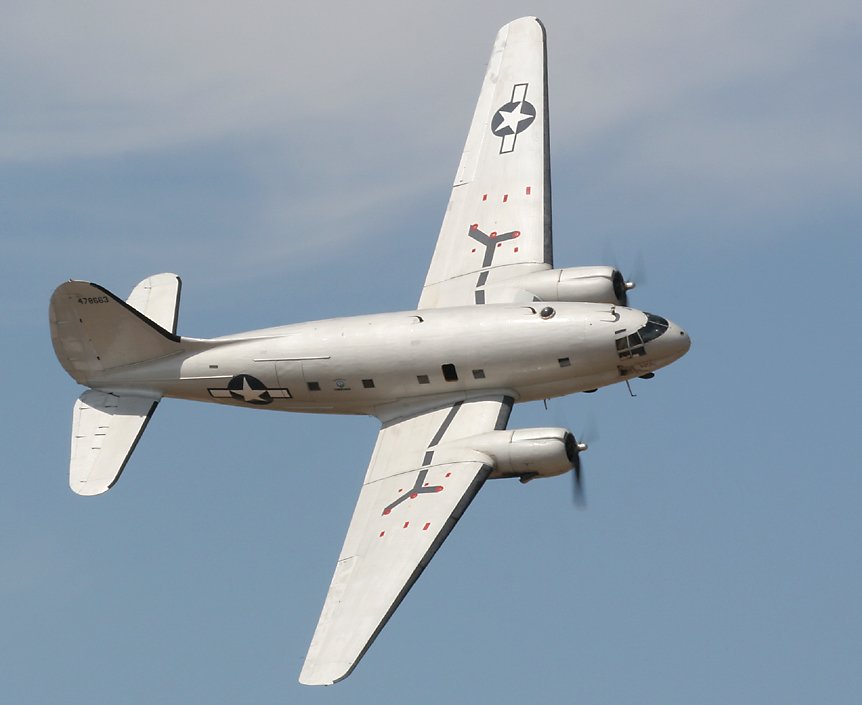
|

|
Three C-47 Dakotas flew at this year's show but this isn't one of them, instead
it's one of the small number of US navy R4Ds produced during the war.
The R4D was the navy version of the Dakota, and like the Russian version
of the plane, called the Lisunov Li-2, the R4D was equipped with bomb racks
under the fuselage, typically used to carry depth charges for use against
submarines.
|
 |

|
It's a little-known fact that the Japanese also operated Nakajima L2D license-built
versions of the Dakota, but none of those flew at the show.
However the "Tora, Tora, Tora" display team did perform their Pearl Harbor
simulation, complete with a large formation of replica Nakajima "Kate"
torpedo bombers. As well as their use at Pearl Harbor, Kates
were also responsible for sinking the American aircraft carriers Lexington
at the battle of the Coral Sea, the Yorktown during the battle of Midway
and the Hornet at the battle of Santa Cruz.
|
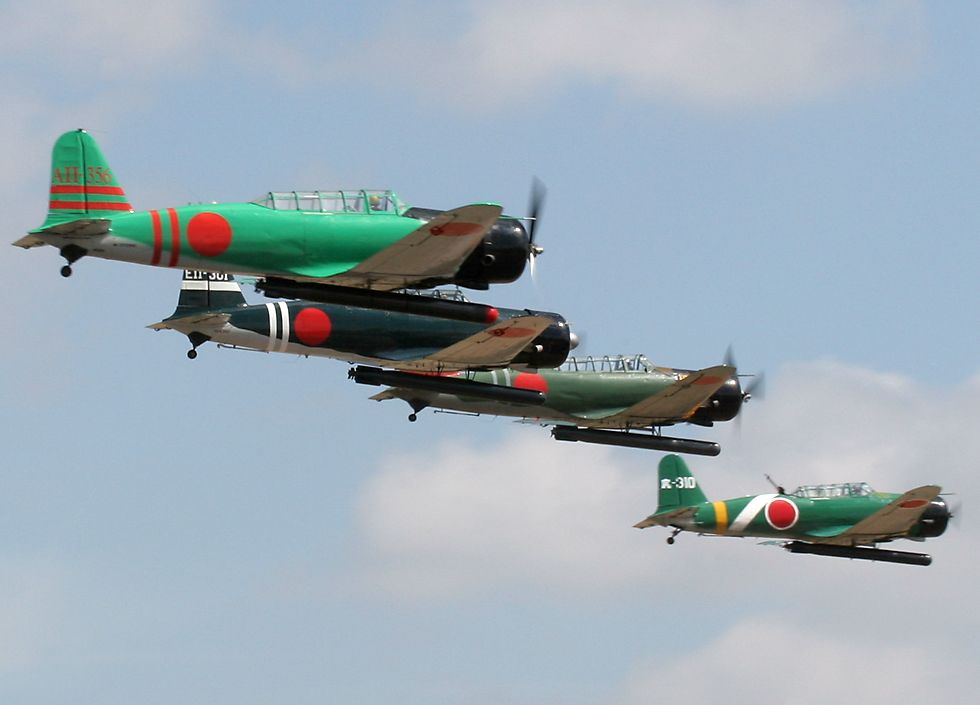 |


There was also a solitary replica "Val" dive bomber, also used during the
Pearl Harbor attack.
With fixed undercarriage and an apparently inadequate payload of one 250
pound bomb, the Val was basically obsolete even at the end of 1941, however
they performed surprisingly effectively at Pearl Harbor and later against
the British carriers HMS Cornwall and HMS Dorsetshire, and the carrier
HMS Hermes.
|

|
The "Tora, Tora, Tora" team had plenty of replica Zero fighters flying at the
show, but this is the real thing, though it's powered by an American engine.
This A6M2 Zero is part of the Camarillo wing of the CAF, flying in all
the way from California along with its C-46 stablemate.
|
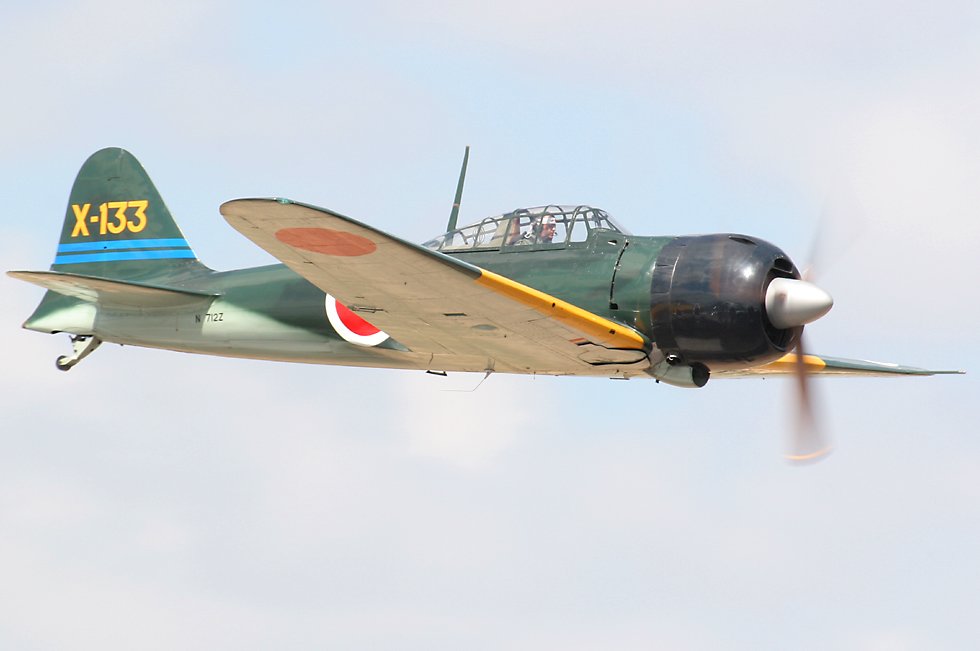 |

|
This F6F Hellcat is another aircraft based at Camarillo. The Hellcat
was designed specifically as a Zero killer, captured examples of the Japanese
fighter were analyzed to determine its weak points, and these findings
were used when designing the Hellcat.
|
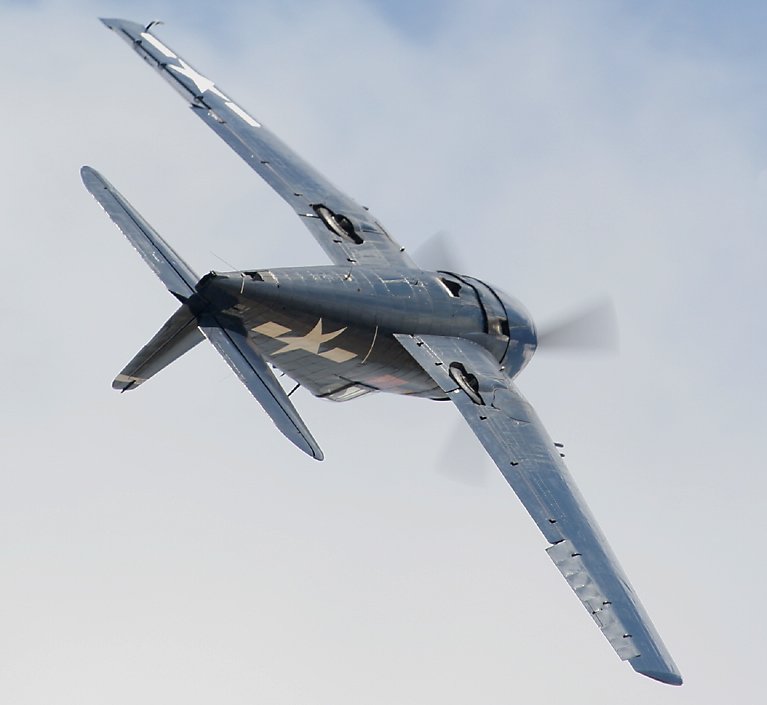 |

|
The F4U Corsair was another very successful American naval fighter of world
war two. It was the first American combat aircraft to exceed
400 mph in level flight, but its tricky carrier landing characteristics
initially saw it limited to land-based operations, until the British perfected
a technique of landing it on a carrier by flying in on a banked approach,
rather than the traditional straight-in approach.
|
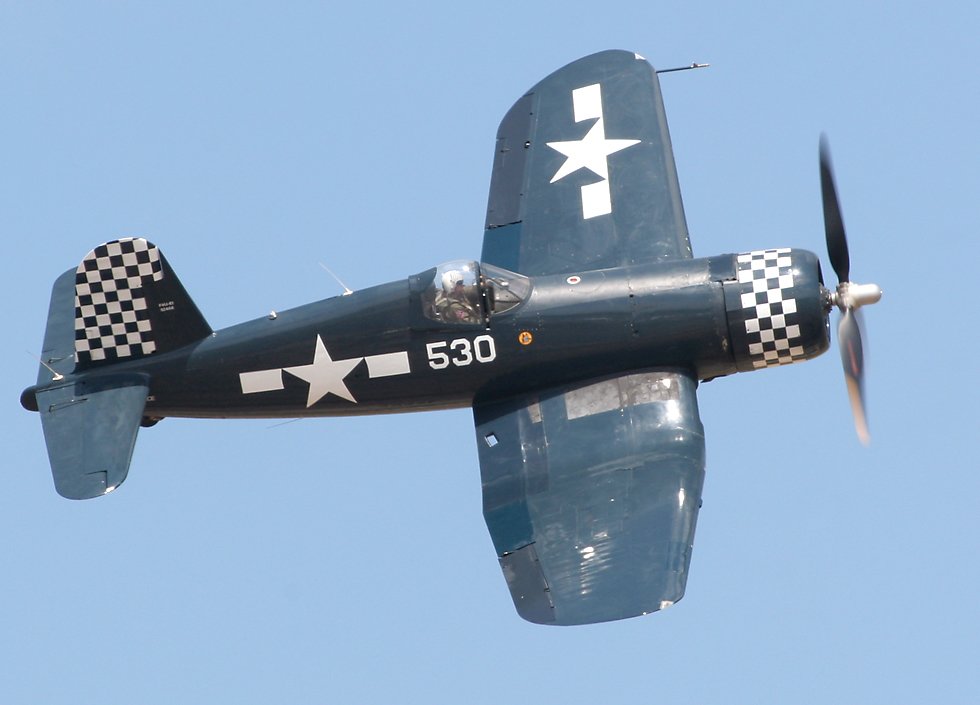 |

|
The Douglas SBD Dauntless was America's main naval dive bomber at the start
of the war, and it served successfully in that role until the end of the
war, even managing to shoot down quite a few Japanese aircraft along the
way. Its finest hour was during the battle of Midway, when
Dauntlesses sank a cruiser and the four Japanese aircraft carriers used
during the attack.
|
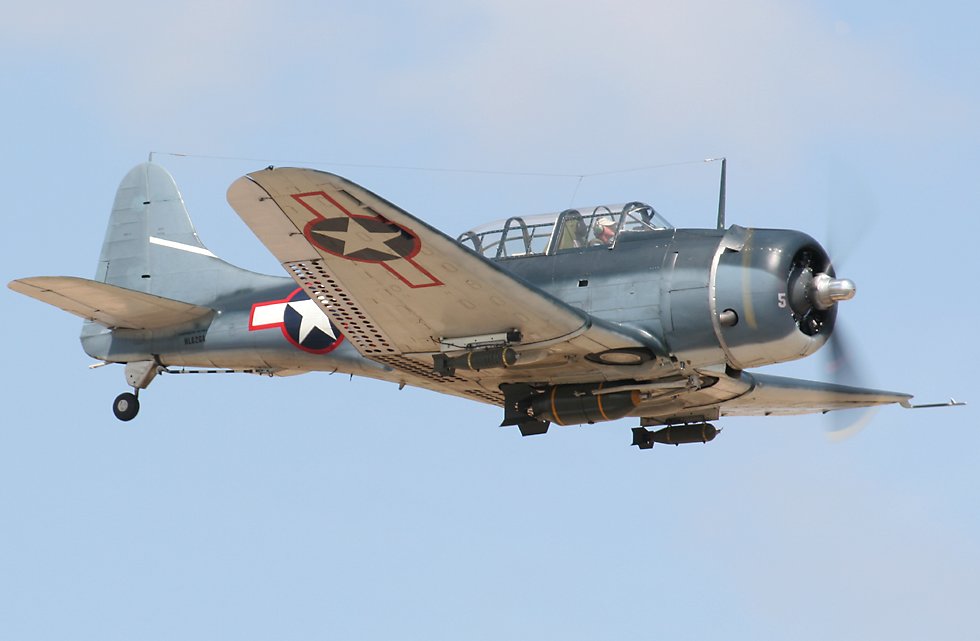 |

|
The much larger Curtiss SB2C Helldiver was actually faster than the Dauntless,
but it had less range and very poor handling characteristics.
Most crews preferred the Dauntless and other users, including the Royal
Navy, the Royal Australian Air Force and the US Army Air Force, rejected
the aircraft after initial service trials.
|
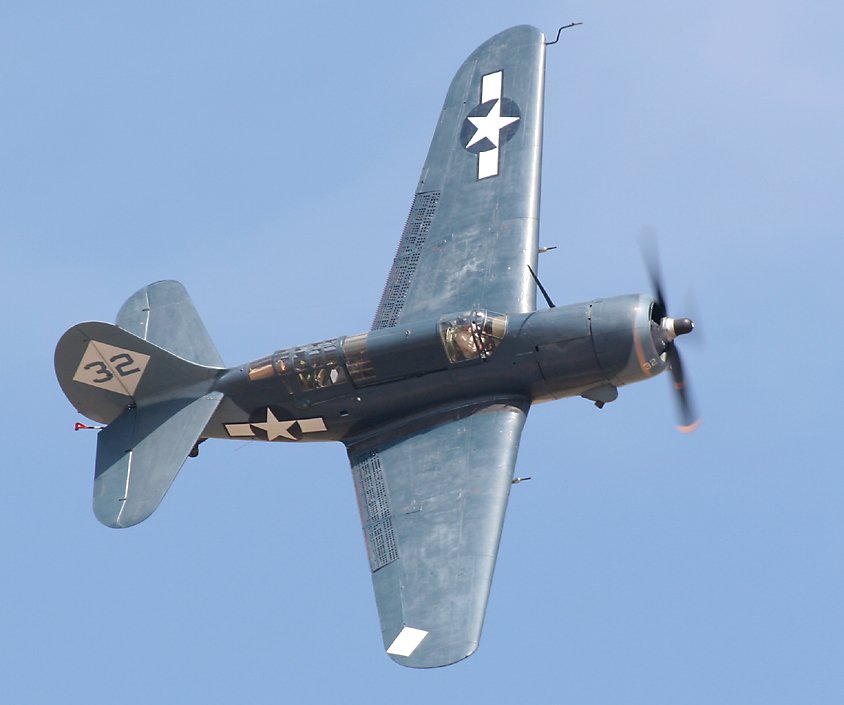
|

|
The Grumman Avenger torpedo bomber was another large single-engined naval bomber
whose debut was as inauspicious as the Helldiver. Designed
as a torpedo bomber, a flight of 6 aircraft was used against the Japanese
fleet at the battle of Midway, but they were heavily mauled by Japanese
fighters, and the
only survivor returned with severe damage to the aircraft and crew.
However it soon came into its own and served effectively throughout the
rest of the war.
|
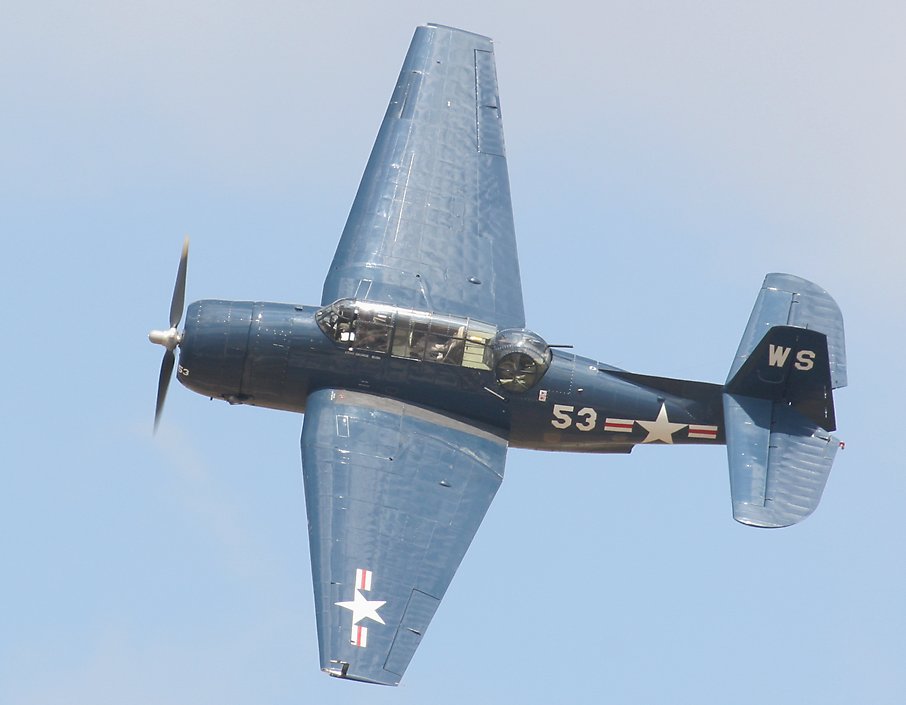
|

|
Two Avengers flew during the 2007 show, both sporting the distinctive top turret,
which wasn't fitted to aircraft manufactured after the Japanese air forces
had been hammered into submission.
|
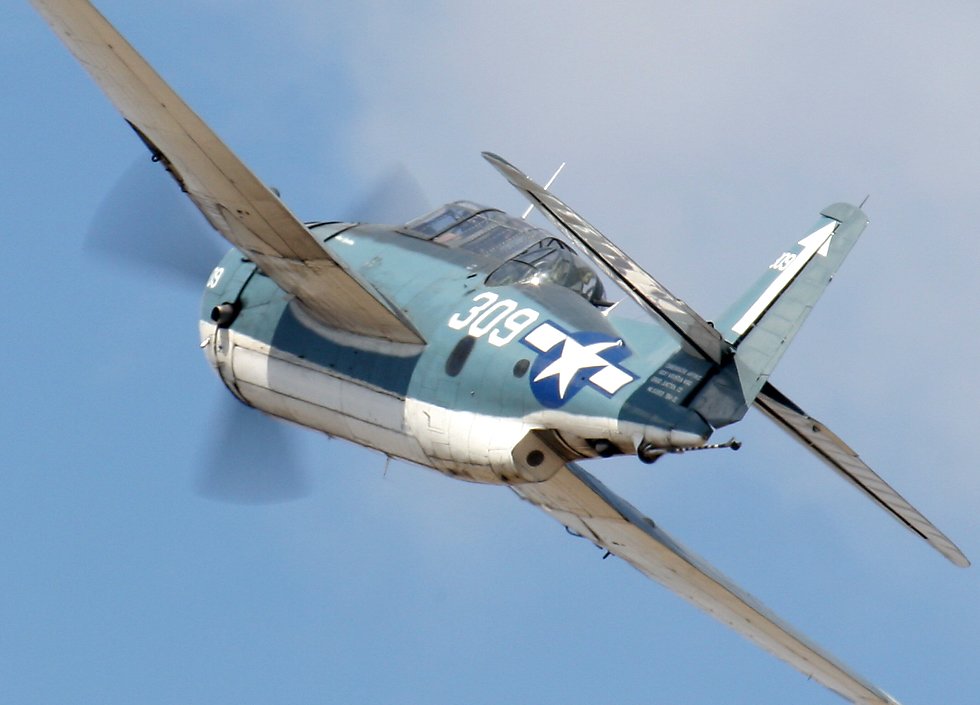 |

|
A large number of T-6 Texan trainers flew during the show, but this isn't
one of them! This is a very rare variant called the LT-6 Mosquito,
which was used as a forward air controller during the Korean war, marking
ground targets with white phosphorus rockets. Two Mosquitos
flew this year, providing a seldom seen insight into this dangerous job.
|
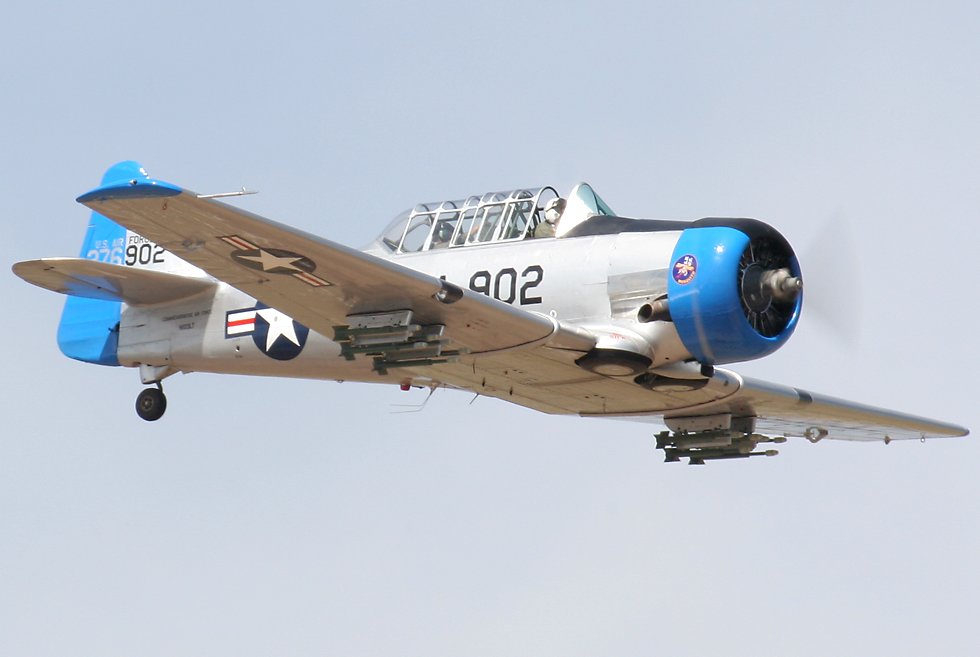
|

|
There were also two A-26 Invaders at the show, marked up in nearly identical
color schemes. The A-26 is one of the lesser known combat aircraft
of world war two, which is strange since it remained in service for an
exceptionally long time, right into the Vietnam war. It was
the fastest US bomber of world war two, with many innovative features such
as the low profile, remotely operated top gun turret. The variant
shown here carries a terrific punch, with eight .50 caliber machine guns
in the nose and another six in the wings - more firepower than a Flying
Fortress.
|
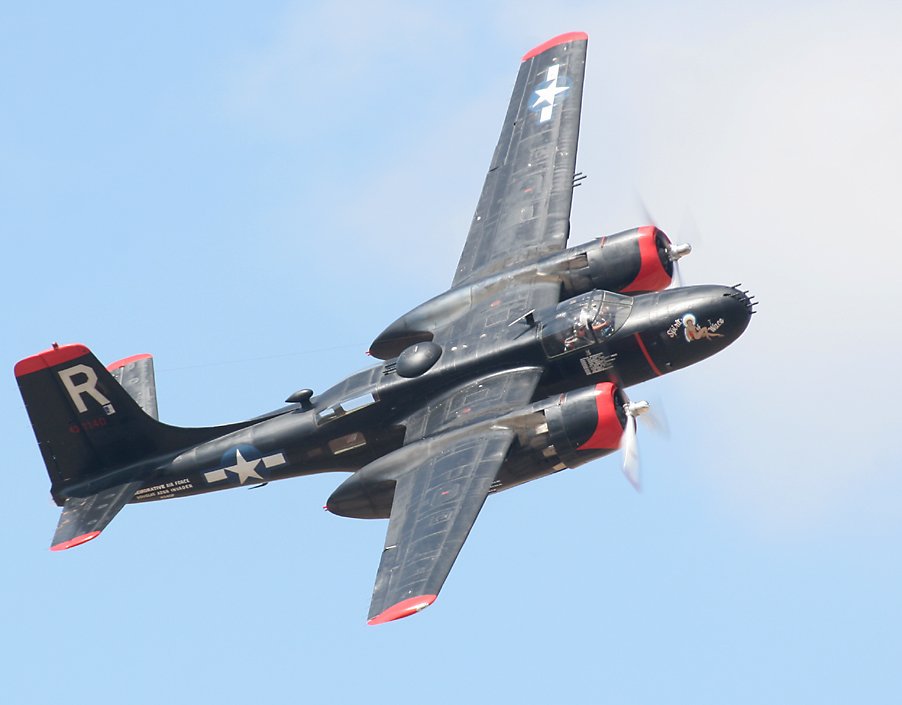
|

|
Here's another variant of the C-47 Dakota, this time an AC-47 Spooky gunship participating
in the simulated rescue of a pilot downed during the Vietnam war.
In real life, the AC-47 would orbit a besieged village or other location
to be defended and pour ordnance down on communist forces from its three
7.62 mm miniguns, each capable of firing at 4000 rounds a minute.
|
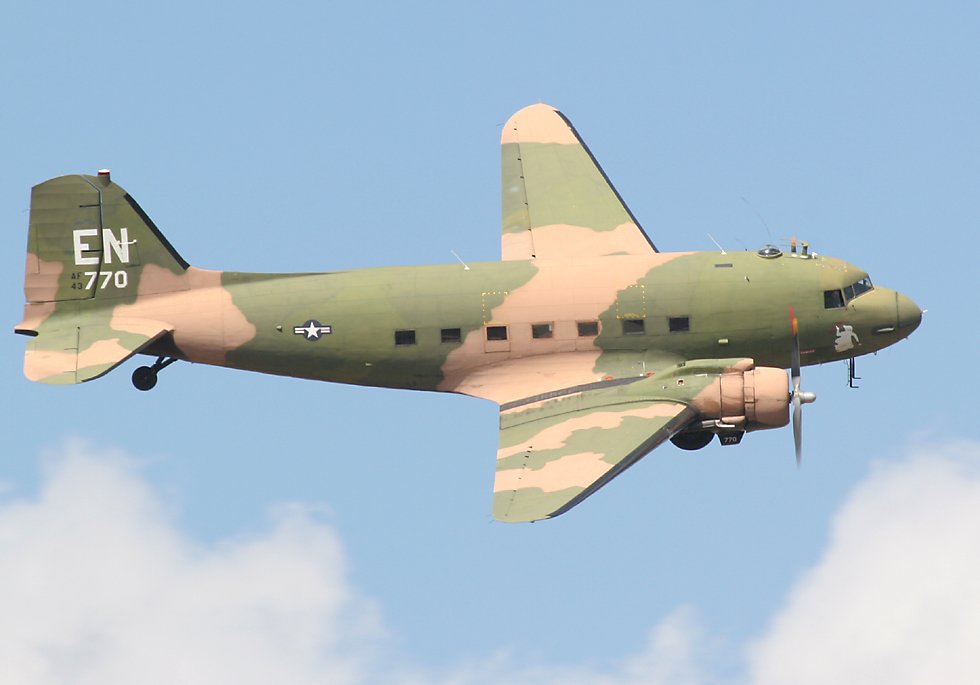 |

|
Here's the AC-47 circling the downed pilot together with an A-1 Skyraider, an
aircraft which was often used to support such combat search and rescue
missions. The Skyraider and the Spooky were both well suited
to this role because they could carry a lot of ordnance, loiter for a long
time and fly slowly enough to accurately lay down fire near friendly forces.
|
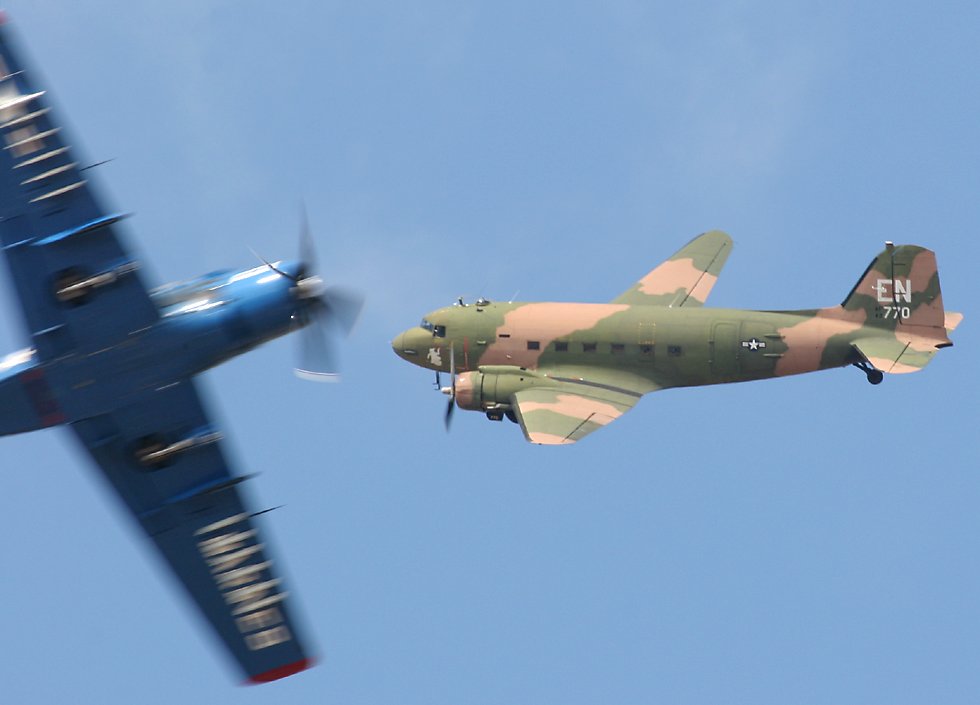 |

|
The Skyraider entered service just after world war two, it was mostly flown
as a single seat ground attack aircraft, but multiple seat versions like
this A-1E were also used extensively. The A-1E could carry
four crewmen under its enlarged canopy and another three seated inside
the fuselage, allowing it to be used for carrier on deck (COD) operations,
delivering crewmen, mail and other essentials to aircraft carriers.
|
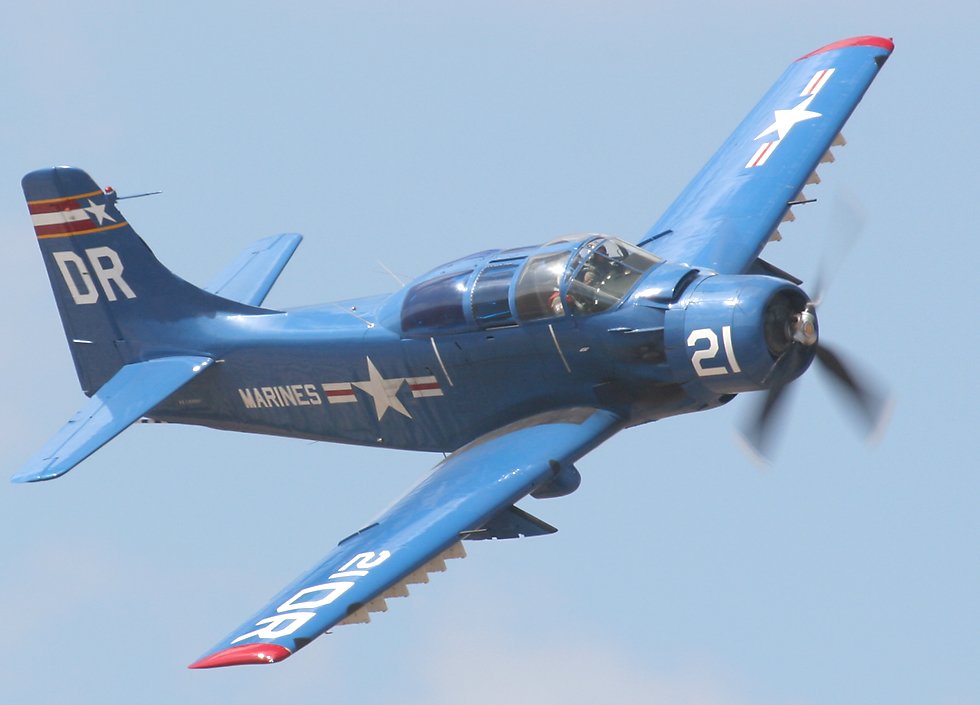 |


It's typical of the Midland show that they also put an A-1D Skyraider single seater into the
air at the same time as the A-1E and the AC-47, in addition to a pair of
O-2 Super Skymaster forward air control aircraft.
|

|
And you can't have a Vietnam war demonstration without the aircraft which became
synonymous with the war, the UH-1 Iroquois, better known as the "Huey",
because of its original HU-1 designation. Two Hueys flew during
Saturday's demonstration, one in the "dust off" role picking up the pilot
after he popped a smoke canister.
|
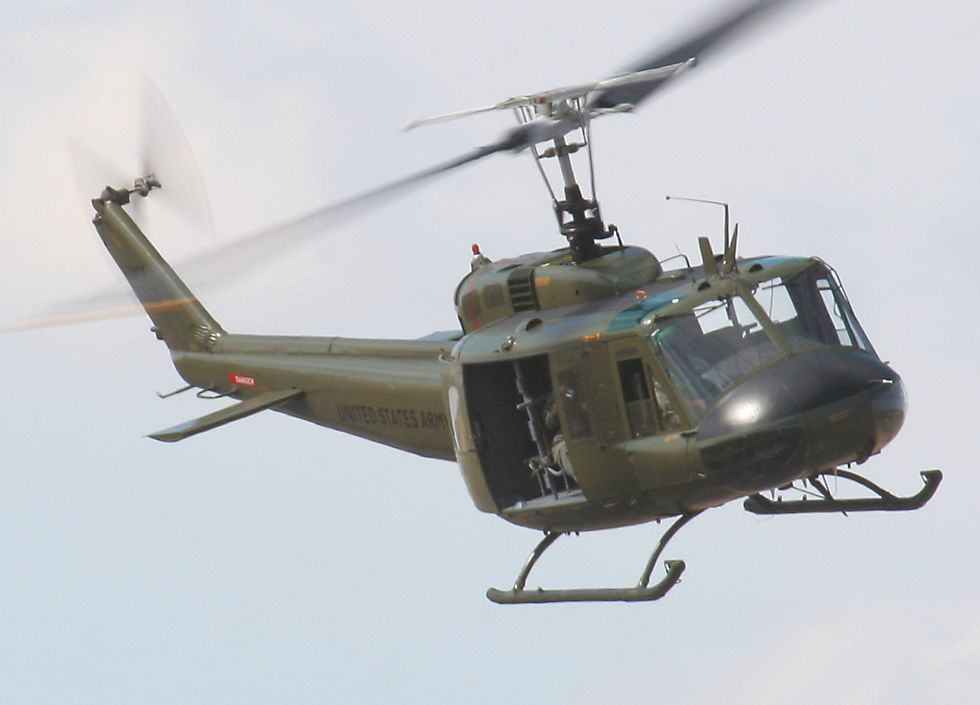 |

|
And they even had an AH-1 Cobra gunship flying synchronized circuits with all
the other aircraft, with icing on the top in the form of dynamite and gasoline
fueled explosions and strafing runs provided by the largest pyrotechnics
team at any airshow in the world, the Commemorative Air Force's own Explosive
Ordnance Detachment (EOD).
|
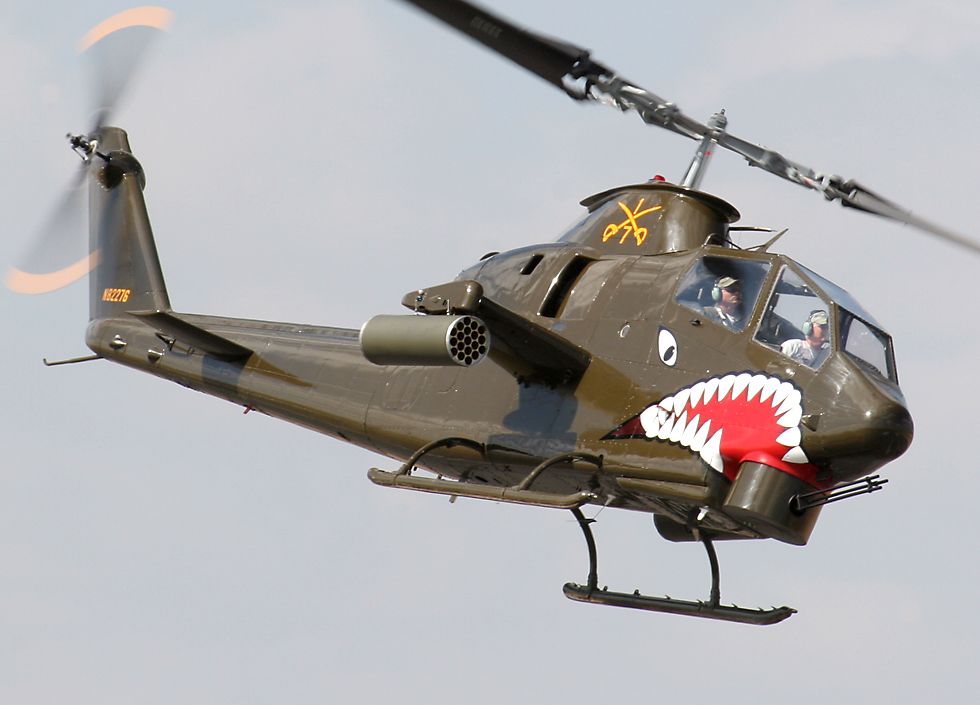 |

|
The end of each day's show saw a formation and aerobatics demonstration by
The Trojan Horsemen, a six aircraft flight of T-28 Trojans, an aircraft
used both as a trainer and as a weapons platform during the Indochina conflict.
|
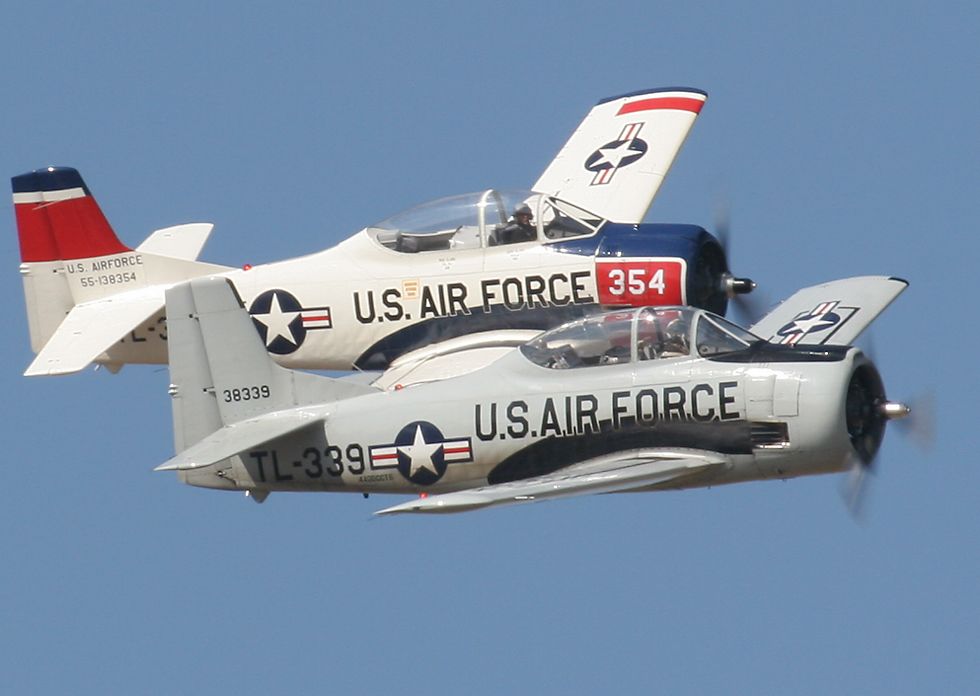 |

|
But wait, there's more! Fans of modern military hardware
were treated to displays of currently active fighters, interspersed between
the major set pieces. Here's a pair of local F-16 Fighting
Falcons, which did a couple of formation passes on Saturday and single
ship flybys on Sunday.
|
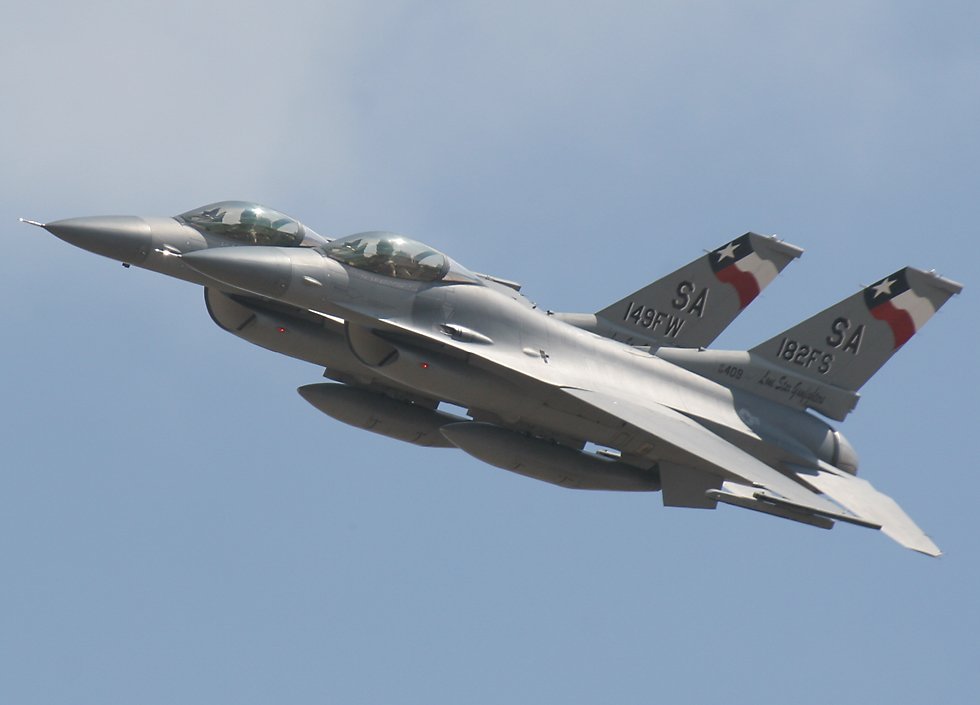
|

|
However it was left to this F-15E Strike Eagle to do the air force's full demonstration
routine, including a satisfying complement of tight turns, fast passes
and fast banked passes!
|
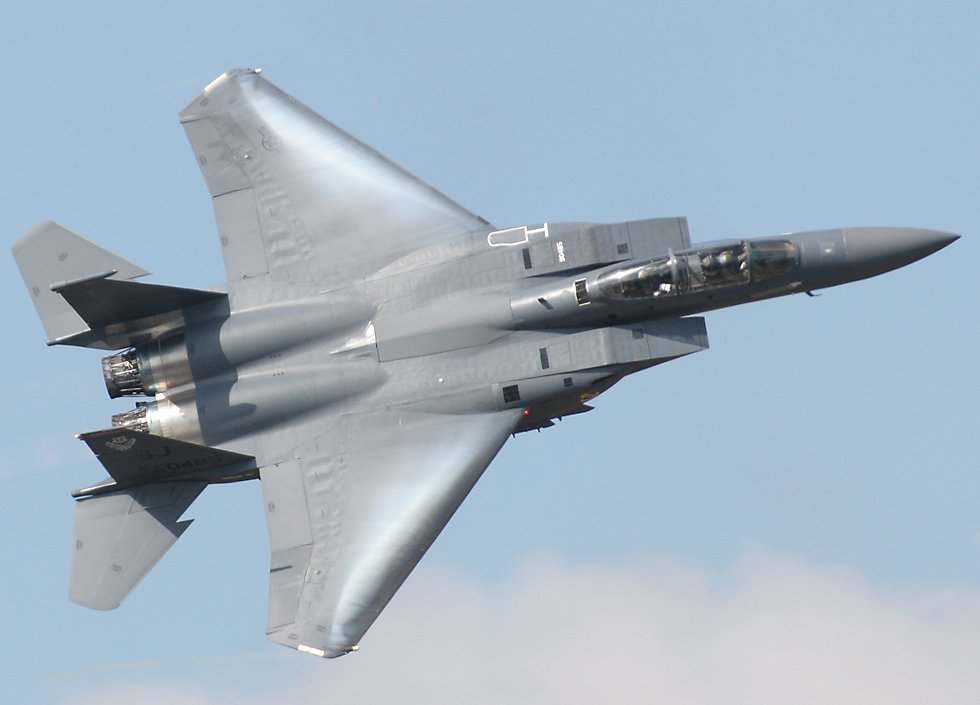
|

|
The Strike Eagle also flew a Heritage Flight formation with the P-47 Thunderbolt.
It's a very appropriate combination of aircraft, since the P-47 was a top-shelf
fighter which served equally effectively in the ground attack role, just
as the Strike Eagle effectively performs both roles today.
|
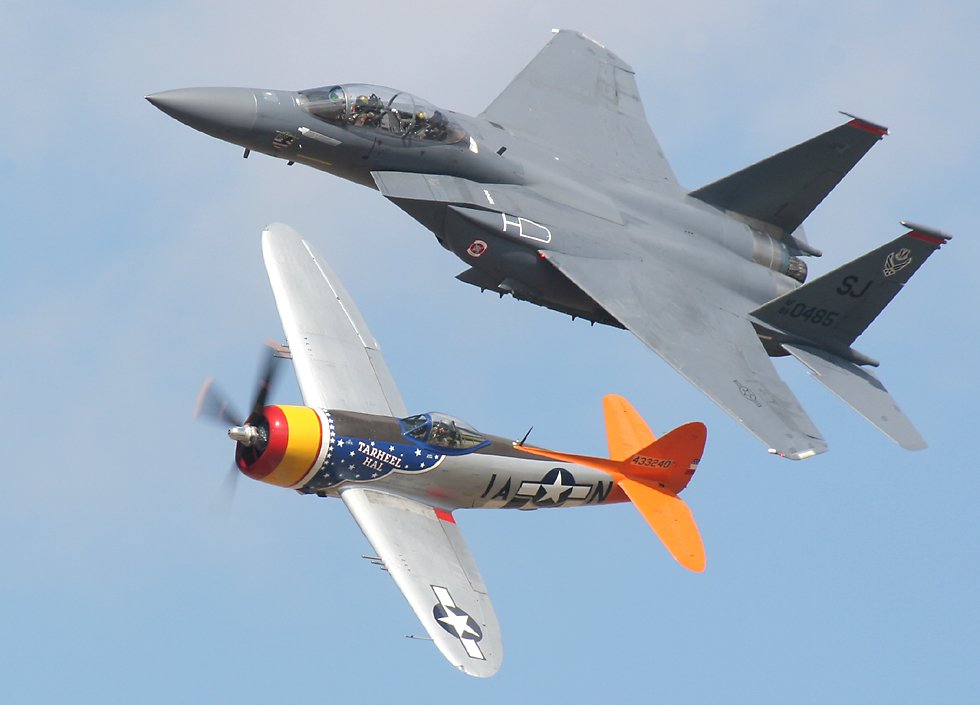
|

|
The navy strutted their stuff too, though as you can see they began Saturday's
routine a little too enthusiastically with a tail strike. The
orange color you see on the runway is mostly jet blast from the afterburners,
but I'm fairly certain that there was also a large shower of sparks when
the tailhook, recessed between the two engines, hit the tarmac.
|
 |

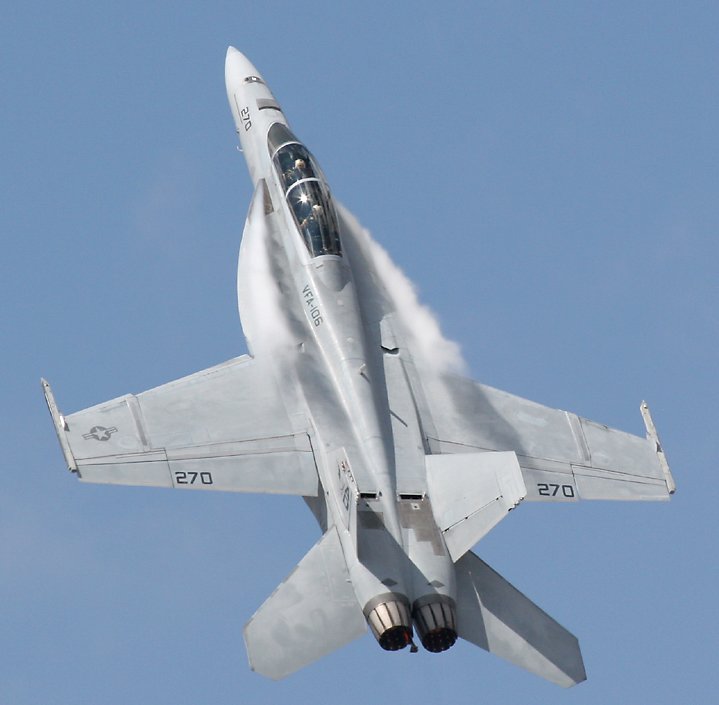
Anyway it was all just another bit of harmless excitement added to what
would have been an extremely exciting routine even without the whoopsy
at the beginning!
This demonstration was flown by an F-18F Super Hornet, the two seat version
of the Super Hornet, which operates alongside the original F-18C and F-18D
"legacy" Hornets.
The
Super Hornet is significantly larger than its predecessor and has greater
range and carrying capability, however its top speed is somewhat slower,
Mach 1.6 against the legacy Hornet's Mach 1.7. The Super Hornet
can carry 17,750 pounds of external ordnance compared to the legacy Hornet's
13,700 pounds, and has a combat radius of 520 nautical miles versus the
legacy Hornet's 369 nautical miles.
|

|
The Hornet flew in a "tailhook legacy" flight with the Camarillo F4F Wildcat,
the navy's equivalent of the air force "heritage flight".
|
 |

|
And the F4U Corsair flew with both of them!
|
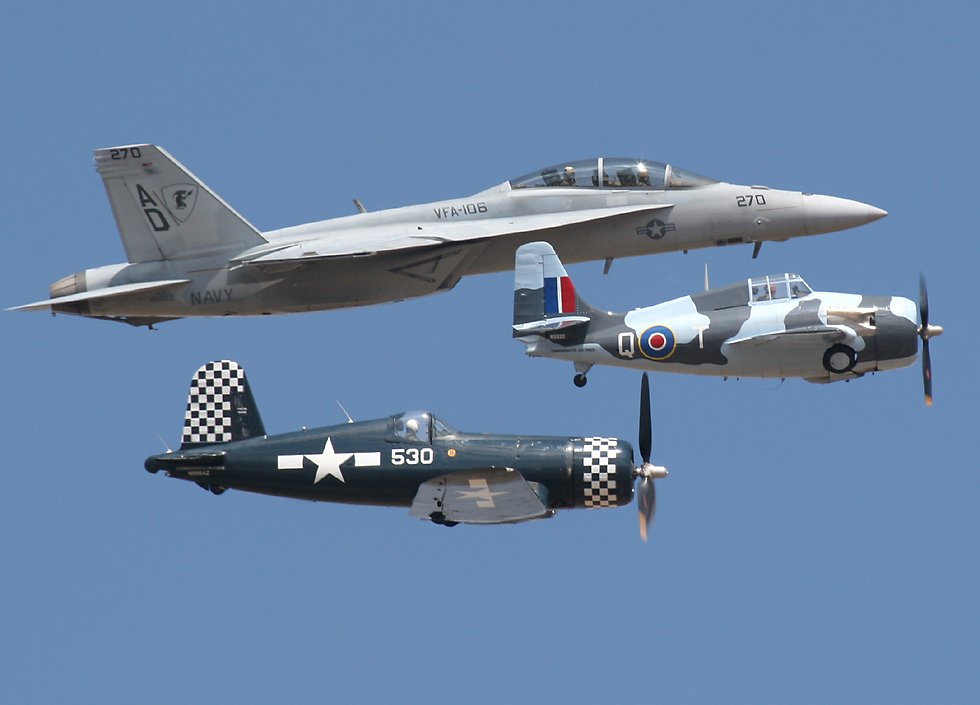
|

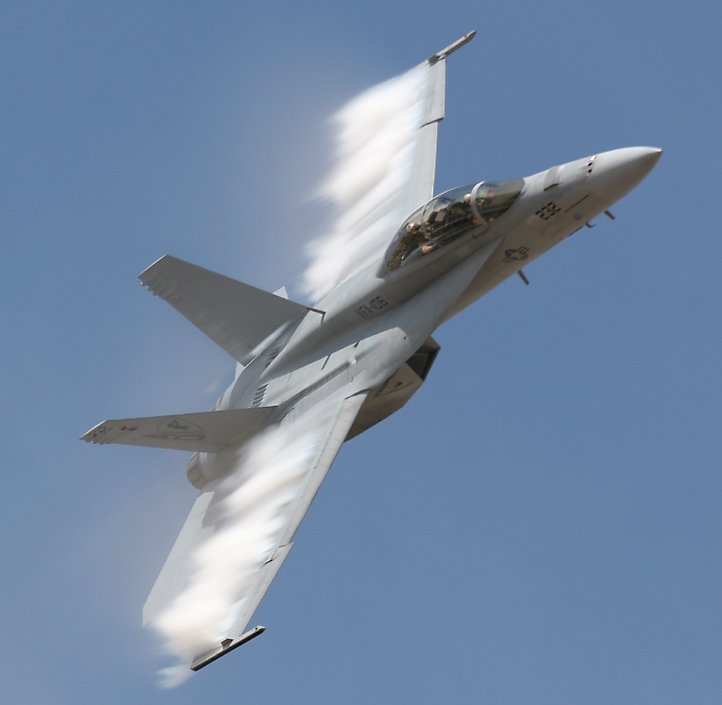
On both days the Legacy Flight performances concluded with a very high speed "sneak
pass" from the Super Hornet, timed to coincide with the end of an in-line
flyby of the Wildcat and the Corsair in "dirty configuration" with their
landing gear and tailhooks extended.
|
See the highlights of the Midland airshow from
2006
and
2008.


































